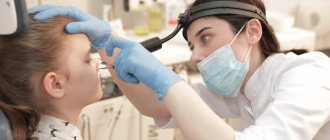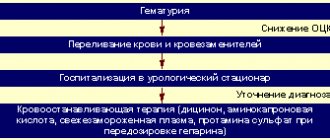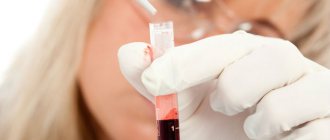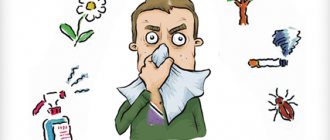In 70% of cases, nosebleeds are due to mechanical damage. Moreover, this can be not only external influence (a blow), but also careless blowing of the nose, picking the nose. But sometimes the causes of bleeding are associated with tumors and other diseases. If you cannot stop the bleeding on your own within 10 minutes, you must call emergency help - otherwise the blood loss may be too great.
Why does my nose bleed?
Nosebleeds have many causes. Fortunately, most of them are not serious.
The most common cause of nosebleeds is dry air. Dry air can be caused by hot climates with low humidity or hot indoor air. Both environments cause the nasal membrane (the delicate tissue inside the nose) to dry out, crust or crack, and increase the likelihood of bleeding when rubbing or blowing the nose.
Other common causes of nosebleeds include:
- nose picking;
- colds (upper respiratory tract infections) and sinusitis, especially episodes that cause repeated sneezing, coughing, and nose-blowing;
- severe nose blowing;
- trauma to the nose and/or face;
- allergic and non-allergic rhinitis (inflammation of the nasal mucosa);
- blood thinning drugs (aspirin, non-steroidal anti-inflammatory drugs, warfarin, etc.);
- chemical irritants (chemicals in cleaning products, chemical fumes in the workplace, other strong odors);
- great height. As altitude increases, the air becomes thinner (lack of oxygen) and drier;
- deviated septum (irregular shape of the wall separating the nose on both sides);
- Frequent use of nasal sprays and medications for an itchy, runny or stuffy nose. These medications—antihistamines and decongestants—can dry out the nasal membranes;
Other, less common causes of nosebleeds include:
- alcohol consumption;
- bleeding disorders such as hemophilia, von Willebrand disease or leukemia;
- high blood pressure;
- atherosclerosis;
- facial and nasal surgery;
- nasal tumors;
- nasal polyps;
- immune thrombocytopenia;
- pregnancy.
The reason may tell you what to do if your nose bleeds.
Symptoms of bleeding
The main symptom is the appearance of blood from the nasal sinuses, its flow outward and inward (through the nasopharynx). Bleeding may also be accompanied by the following symptoms:
- increased heart rate;
- decrease in blood pressure;
- nausea;
- general weakness;
- headache;
- dizziness;
- feeling of fullness in the ears;
- paleness of the skin of the face and hands.
Bleeding can be either light or heavy. Depending on the volume of blood lost, there are 3 degrees of severity:
- light – up to 500 ml;
- average – 500-1400 ml;
- heavy – more than 1400 ml.
How to stop nosebleeds?
To stop a nosebleed, follow these steps:
- Relax. There is no need to panic, because with excitement, the heart begins to beat faster and blood loss increases. Therefore, it is very important to calm down.
- Sit up straight and slightly tilt your body and head forward. This will prevent blood from flowing down your throat, which can cause nausea, vomiting and diarrhea.
- If you have a nosebleed, breathe through your mouth and as deeply as possible.
- Unfasten the collar and loosen the belt. If possible, open a window.
- What to do if your nose is bleeding? Use a tissue or damp cloth to catch the blood.
- Use your thumb and forefinger to squeeze the wings of your nose. Be sure to press the wings of the nose against the hard bone ridge that forms the bridge of the nose.
- Continue pinching your nose for at least 5 minutes before checking to see if the bleeding has stopped. If your nose is still bleeding, continue squeezing for another 10 minutes.
- Apply an ice pack to the bridge of your nose to further constrict the blood vessels (which will slow bleeding) and provide comfort.
All these tips are also suitable for those who are interested in how to stop a child’s nosebleed at home.
First aid for nosebleeds should be provided strictly following the previous advice, or by ambulance. Any mistake when providing first aid can have serious consequences. What are the “ mistakes when providing first aid or how not to save people?” read the article.
Causes
Possible causes of bleeding:
- mechanical trauma to the nasal mucosa;
- deviation of the nasal septum to one or both sides from the midline;
- thinning of the nasal mucosa;
- inflammatory processes of various origins;
- benign or malignant formations inside the nasopharynx;
- hyperthermia during an infectious process or after overheating in the sun;
- exacerbation of hypertension;
- hormonal disorders;
- abuse of vasoconstrictor drops;
- long-term use of NSAIDs;
- overdose of anticoagulants, leading to problems with blood clotting;
- dilation of blood vessels when drinking alcohol;
- diseases of the circulatory system, heart or blood vessels;
- changes in barometric pressure (divers, climbers, during air travel).
Expectant mothers, more often in the third trimester, experience mild nasal bleeding due to the growth of the capillary network in the nasal cavity due to increased production of estrogen.
Why does it happen?
The reasons are usually divided into general and local. The first include:
- cardiovascular diseases: hypertension, atherosclerosis, heart defects, vascular anomalies;
- kidney and liver diseases;
- hormonal imbalance;
- diseases of the circulatory system;
- hemorrhagic diathesis;
- violation of hemostasis;
- infectious diseases;
- sun and heatstroke;
- bleeding as a result of changes in atmospheric pressure (when diving to depth, when climbing to a height for climbers, pilots).
Local reasons include:
- any trauma to the nose, including foreign objects, surgery, medical procedures;
- formations in the nasal cavity;
- plethora with chronic and acute sinusitis and rhinitis, with adenoids;
- dystrophic changes in the nasal mucosa (deviated septum, atrophic rhinitis).
Each individual case requires an individual approach after examination and diagnosis. First aid for nosebleeds is necessary before going to the hospital or before the ambulance arrives.
Prevention
To avoid bleeding in adults or children, it is useful to adhere to the following rules:
- get rid of the habit of picking your nose;
- against the background of allergic or cold nasal congestion, do not blow your nose too often;
- when practicing dangerous sports (boxing, rugby), wear a protective helmet;
- use vasoconstrictors strictly according to instructions (no longer than 7 days);
- to reduce pressure in the nasal cavity, you should sneeze with your mouth open;
- If coagulants previously caused nasal bleeding, then the next time they are prescribed, be sure to inform your doctor about this.
It is also important not to rip off the crusts in the nose formed after bleeding until the mucous membrane recovers on its own. Otherwise, bleeding in this case may recur every day.
When working in production with polluted air, it is necessary to use personal protective equipment. To prevent bleeding, it is useful to undergo regular preventive examinations. With the next episode of epistaxis, it is important to see an otolaryngologist to find out the cause of the bleeding and receive recommendations for the future.
Methods to stop nosebleeds
An ancient but effective method is anterior nasal tamponade. For tamponade, the doctor uses gauze turunda soaked in drugs. Using a nasal speculum and tweezers, the doctor establishes layers in the nasal cavity layer by layer from the vestibule of the nose to the nasopharynx and from the bottom to the upper sections. This method is effective, but has negative sides. Installing the turunda takes from 2-3 minutes to 10-15 minutes. The procedure is quite painful and difficult for patients to tolerate. Therefore, Merocell hemostatic tampons are used for anterior tamponade. These tampons are thin, so they are installed in the nasal cavity with minimal discomfort. After installation, the tampons are moistened with saline, under the influence of which they swell and fill the nasal cavity.
For posterior nosebleeds, when the source of bleeding is in the posterior sections of the nasal cavity and large vessels bleed, installation of a posterior tampon is indicated. The peculiarity of this method is that a special conductor is inserted through the nose, which is removed through the mouth. A tampon moistened with a hemostatic agent is tied to the end of the guidewire. The guidewire is pulled out of the nose and the tampon is inserted behind the soft palate into the nasopharynx, and then into the nasal cavity. The negative side of the method is the discomfort for the patient and the technical difficulty of performing it in an emotionally excited state.
An effective method of combating posterior and anterior nosebleeds, regardless of location, is the Epistop catheter. The catheter is a tube consisting of a system of three balloons. After installing the catheter in the nose, using warm water, the posterior balloon is inflated and compresses the vessels of the posterior localization. Then the middle-localized balloon is inflated, pinching the vessels in the area of the nasal turbinates and the middle nasal septum. And at the end, the anterior balloon expands, compressing the vessels in the area of the Kisselbach locus. The advantages of this method are that installation of such a catheter takes 1-3 minutes and the procedure is less painful for the patient.
Surgical methods to stop nosebleeds
In specialized institutions and clinics, if stopping posterior nasal bleeding using packing is ineffective, they resort to angiography (x-ray examination of blood vessels) and vascular embolization (cessation of blood flow through the vessel) of the nasal cavity under the control of an electron-optical converter. The listed methods are used in cases where the doctor is unable to identify the location of the bleeding. The reason for this is often bleeding from the deep parts of the nasal cavity.
In anterior nosebleeds, the source of bleeding is localized in the Kisselbach Locus region. And if the doctor has identified bleeding vessels, then the tactics to stop the bleeding are noticeably different from the listed methods.
Electrocoagulation
In almost all cases, in ENT practice, electrocoagulation is used to stop bleeding from the Kisselbach Locus. After preliminary local anesthesia, the bleeding vessels are cauterized with an electrocoagulator or Surgitron device. In our clinic, a similar procedure is performed under endoscope control. This allows for a good detailed examination of the nasal cavity, identifying damaged vessels and cauterizing them, minimizing the risk of relapse. But electrocoagulation has contraindications. An absolute contraindication would be an artificial ri driver. Electrocoagulation in this case can disable the pacemaker and lead to undesirable consequences for the patient, including cardiac arrest.
There are alternative methods to stop nosebleeds. Such as cauterizing bleeding vessels with preparations containing silver, or destroying vessels in the area of the Kisselbach locus using a sharp spoon called “abrasio”.
Often the cause of bleeding is a deviated nasal septum. By forming sharp protrusions, the deviated septum damages the nasal mucosa, thereby stimulating constant bleeding. In this case, the patient is indicated for surgical intervention. From local removal of a deviated section of the nasal septum (cristotomy) to complete correction of the nasal septum (septoplasty).
Laser coagulation of blood vessels is really effective
See also Treatment of ENT diseases Nosebleeds
Laser coagulation of blood vessels is one of the most gentle and yet effective methods of treating nosebleeds.
Its advantages include:
- The impact is targeted, without causing extensive damage to the mucous membrane and soft tissues.
- Submucosal vessels of any location can be coagulated, if necessary, removing detected telangiectasia and hemangiomas.
- The vessel is vaporized under the influence of the high temperature of a narrowly directed laser beam, instantly and irreversibly switching off from the bloodstream.
- Laser coagulation does not provoke massive thrombus formation and does not lead to the formation of extensive edema.
- The physical discomfort experienced by the patient does not require the use of general anesthesia (anesthesia). Therefore, laser coagulation of blood vessels for frequent nosebleeds can be performed on an outpatient basis, even if the patient has concomitant somatic diseases. There is no long-term disability.
In St. Petersburg, laser coagulation of blood vessels for the treatment of recurrent epistaxis is successfully used in the Clinic of Dr. Korenchenko, supplementing it with other techniques if necessary.
Our doctors recommend not postponing a visit to specialists until difficult to stop nosebleeds develop. Even a single and supposedly causeless episode of bleeding is an alarming sign. And repeated bleeding requires mandatory and prompt consultation with a doctor, even if the amount of blood loss is small. This will allow you to avoid the development of severe complications and carry out the necessary full treatment using the most gentle effective techniques.
Rehabilitation period after surgery
Stopping nosebleeds is a kind of surgical intervention, which requires daily observation by an ENT doctor and postoperative rehabilitation. Patients who have had nasal tampons or hemostatic sponges installed receive hemostatic therapy after stopping the bleeding. If necessary, they are transfused with components of lost blood and undergo therapy aimed at lowering blood pressure. On average, a patient stays with a tampon in his nose for 3-7 days. After which the tampons are carefully removed, and the patient is under daily medical supervision for several days. During the rehabilitation period, it is important to continue taking medications that strengthen blood vessels, accelerate healing and moisturize the nasal mucosa.
What not to do?
For nosebleeds it is not recommended:
- Throw your head back so that blood does not flow into the throat, esophagus and stomach.
- Blow your nose so that the blood clot that forms is not damaged, otherwise the bleeding will start again.
- Make tampons from cotton wool, the fibers of which stick to the walls of the nasal passages, and when they are removed, the vessels are injured.
- Do not put any drops into your nose. They can provoke swallowing or gagging movements, which will prevent the formation of a blood clot.








